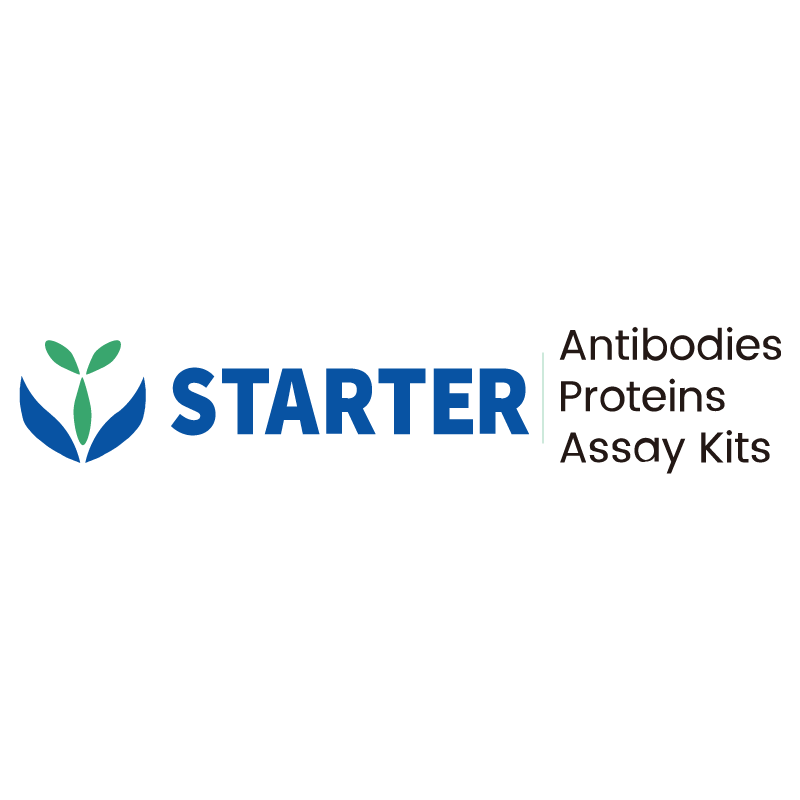WB result of Annexin V Recombinant Rabbit mAb
Primary antibody: Annexin V Recombinant Rabbit mAb at 1/1000 dilution
Lane 1: HeLa whole cell lysate 20 µg
Lane 2: HepG2 whole cell lysate 20 µg
Secondary antibody: Goat Anti-rabbit IgG, (H+L), HRP conjugated at 1/10000 dilution
Predicted MW: 36 kDa
Observed MW: 32 kDa
Product Details
Product Details
Product Specification
| Host | Rabbit |
| Antigen | Annexin V |
| Synonyms | Annexin A5, Anchorin CII, Annexin-5, Calphobindin I (CPB-I), Endonexin II, Lipocortin V, Placental anticoagulant protein 4 (PP4), Placental anticoagulant protein I (PAP-I), Thromboplastin inhibitor, Vascular anticoagulant-alpha (VAC-alpha), ANXA5, ANX5, ENX2, PP4 |
| Immunogen | Synthetic Peptide |
| Location | Cytoplasm, Membrane |
| Accession | P08758 |
| Clone Number | S-1395-41 |
| Antibody Type | Recombinant mAb |
| Isotype | IgG |
| Application | WB, IHC-P |
| Reactivity | Hu, Ms, Rt |
| Purification | Protein A |
| Concentration | 0.5mg/ml |
| Conjugation | Unconjugated |
| Physical Appearance | Liquid |
| Storage Buffer | PBS, 40% Glycerol, 0.05% BSA, 0.03% Proclin 300 |
| Stability & Storage | 12 months from date of receipt / reconstitution, -20 °C as supplied |
Dilution
| application | dilution | species |
| WB | 1:1000 |
Background
Annexin V is a member of the annexin family of proteins, which are a family of cytosolic proteins that bind to acidic phospholipids in cellular membranes at elevated calcium levels, serving as calcium-regulated membrane binding modules. They play a role in organizing membrane lipids and facilitating cellular membrane transport, as well as exhibiting extracellular activities. Recent findings have highlighted the role of annexins as sensors and regulators of cellular and organismal stress, controlling inflammatory reactions in mammals, environmental stress in plants, and cellular responses to plasma membrane rupture. Annexin V is a calcium-dependent phospholipid-binding protein with a molecular weight of approximately 35-36 kDa. It has a high affinity for PS that has been flipped to the outside of the cell membrane during the early stages of apoptosis. This feature allows Annexin V to be used as a fluorescent probe, often labeled with fluorescein isothiocyanate (FITC), to detect apoptotic cells via flow cytometry or fluorescence microscopy. Normal cells and cells in the early stages of apoptosis have intact cell membranes, and thus, the use of Annexin V-FITC in combination with propidium iodide (PI), a nucleic acid dye that cannot cross an intact cell membrane but can bind to the nucleus in late-stage apoptotic and necrotic cells, enables the differentiation between early and late apoptotic cells as well as necrotic cells.
Picture
Picture
Western Blot
WB result of Annexin V Recombinant Rabbit mAb
Primary antibody: Annexin V Recombinant Rabbit mAb at 1/1000 dilution
Lane 1: C2C12 whole cell lysate 20 µg
Secondary antibody: Goat Anti-rabbit IgG, (H+L), HRP conjugated at 1/10000 dilution
Predicted MW: 36 kDa
Observed MW: 32 kDa
WB result of Annexin V Recombinant Rabbit mAb
Primary antibody: Annexin V Recombinant Rabbit mAb at 1/1000 dilution
Lane 1: C6 whole cell lysate 20 µg
Secondary antibody: Goat Anti-rabbit IgG, (H+L), HRP conjugated at 1/10000 dilution
Predicted MW: 36 kDa
Observed MW: 32 kDa


